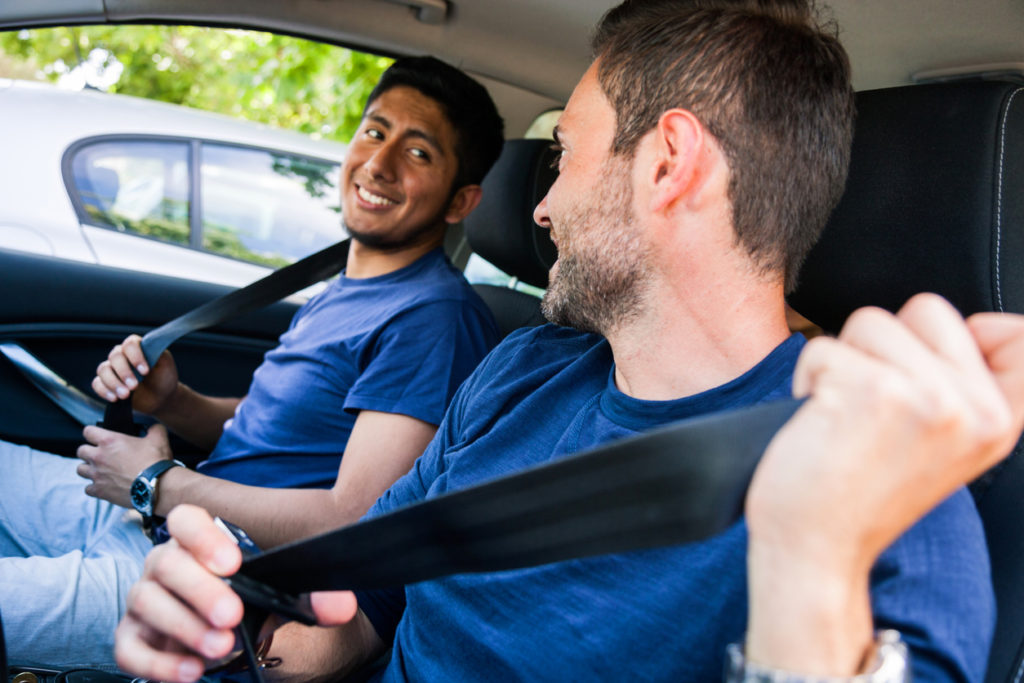
One of the original projects of the Transportation Pooled Fund on Traffic Safety Culture was to study traffic safety culture in situations where ordinary, everyday people intervened to get someone else to wear a seat belt or stop using a mobile phone while driving. In other words, the Pooled Fund studied “safety citizenship.”
The Pooled Fund found that “A significant number of people are in a position to improve traffic safety by intervening with someone engaging in a potentially risky behavior.”[1] If more people would choose to intervene, risky behaviors would decrease.
The report describes traffic safety citizenship as a non-traditional approach to traffic safety:
“Instead of trying to reduce risky behaviors among a small group of individuals, the goal is to instill a sense of responsibility in everyone for the safety of others…. Growing traffic safety citizenship is a strategic shift which focuses on the engagement of the larger majority of safe road users to influence the behaviors of the smaller group engaging in risky behaviors. Engagement in traffic safety by road users is an important component of a comprehensive effort to achieve zero deaths and serious injuries on our nation’s roadways.”
Who are these influential traffic safety citizens?
The Pooled Fund research reveals several common characteristics, such as:
- They perceive intervening as a normal thing to do when a passenger or driver is doing something unsafe.
- They’re more likely to intervene with a family member or close friend than with an acquaintance, coworker, or stranger.
- They feel comfortable and confident about intervening.
- They’re more likely to support traffic safety measures (e.g., primary seat belt laws), than people who don’t often intervene.
Questions for consideration
- Are you currently doing anything in your traffic safety program to encourage and motivate good traffic safety citizens?
- How could you apply the information from the Pooled Fund project to the education and outreach efforts in your state or community?
- What groups could you target for education and outreach to help increase their positive influence on family and close friends?
- How would you adjust your messaging for people who are more likely to intervene in a traffic safety situation? Less likely to intervene? (Look at differences in values mapped on page 29 of the final report).
Learn more about this topic and see the study data in the “Exploring Traffic Safety Citizenship” report, summary document, and webinar. These materials were prepared by the Center for Health and Safety Culture at the Western Transportation Institute from Montana State University.
Find additional Traffic Safety Culture resources here.
[1] Otto, J., Finley, K. and Ward, N.J. (2016, November). “An Assessment of Traffic Safety Culture Related to Engagement in Efforts to Improve Traffic Safety: Final Report.” FHWA Transportation Pooled Fund for Traffic Safety Culture. FHWA / MT-16-012 / 8882-309-03 TPF-5(309).

